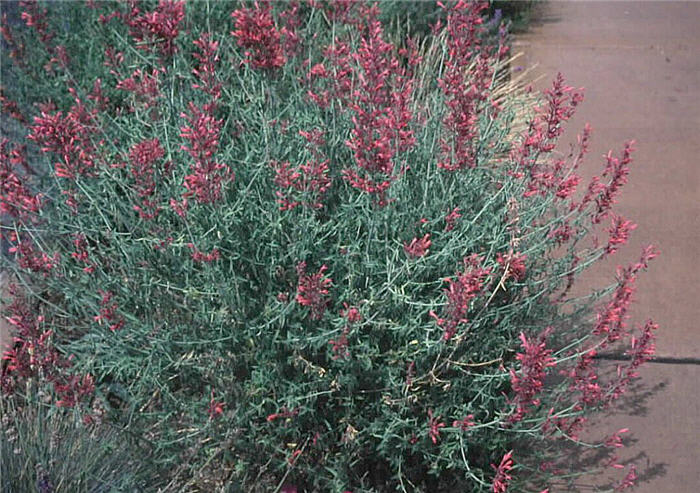| Botanical Name: Agastache rupestris | |
| Common Name: Licorice Hyssop |

-
Anatomy
-
Culture
-
Design
Plant Type
Perennial
Height Range
1-3'
Flower Color
Lavender, Orange
Flower Season
Summer, Fall
Leaf Color
Grey Green
Bark Color
n/a
Fruit Color
n/a
Fruit Season
n/a
Sun
Full, Half
Water
Low
Growth Rate
Fast, Moderate
Soil Type
Sandy, Clay, Loam, Rocky, Unparticular
Soil Condition
Average, Poor, Well-drained, Dry
Soil pH
Neutral, Basic
Adverse Factors
Attracts Bees
Design Styles
English Cottage, Mediterranean, Ranch, Spanish, Native Garden
Accenting Features
Fragrance, Showy Flowers
Seasonal Interest
Summer
Location Uses
Perennial Border, Parking Strip, Patio, Raised Planter, With Rocks
Special Uses
Filler, Mass Planting, Naturalizing, Small Spaces
Attracts Wildlife
Hummingbirds, Butterflies
Information by: Stephanie Duer
Photographer: Mountain States Nursery
Photographer: Mountain States Nursery
-
Description
-
Notes
Enjoyed for its fine, aromatic foliage and uniquely colored flowers, this is an excellent addition to a water-wise garden. Pale grey-green leaves are licorice scented and grow along stiff, upright stems, topped with orange and lavender flowers that bloom mid to late summer. Attractive to hummingbirds, butterflies, and bumblebees. Dead head for best flowering. It is native to mountain regions of Arizona, New Mexico and Northern Mexico.
Grow in average, dry to medium moisture, well-drained soils in full sun to part shade, though best in full sun. Good soil drainage is essential. Plants will perform poorly and may not survive winter in unamended clay soils or over-watered soils. Plants tolerate heat and some dry soils once established. Deadhead spent flower blooms to promote additional bloom. Cut back the dead stems in late winter to early spring. Sandy/gravelly mulches will protect plants and help to avoid onset of rot.